Product Description
Products description
Shaft collar is a simple but important mechanical component. It is widely used in Power Transmission applications, such as motors and gearboxes. The Shaft collars are used as mechanical stops, locating components, and bearing faces. The simple design lends itself to easy installation
–Set screw type/ Set Screw Shaft Collar
–Single Split Collar / One-piece Shaft Collar
–Double Split Collar / Two-piece Shaft Collar
–One-Piece Threaded Collar
–Double wide shaft collar
Set screw type is the most effective when used on a shaft made of a material which is softer than the set screw.
Threaded shaft collars offer the same quality and benefits of smooth bore Collars, meanwhile providing additional features. Threaded collars provide axial holding power which is superior to smooth bore collars, while offering easier installation and adjustment than CZPT ring locking devices.
One-piece shaft collars wrap around the shaft for even distribution of clamping forces. This results in a tight fit and greater holding power, without the shaft damage caused by set screws. Clamp collars are easy to remove, indefinitely adjustable, and work well on virtually any shaft.
Two-piece shaft collars offer the same benefits as one-piece shaft collars with additional versatility and convenience. The split design is easily installed and disassembled, reducing labor and downtime when adjustment, removal, or replacement is necessary. These clamping forces provide the collar with a holding power superior to one-piece and set screw shaft collars.
CZPT Shaft Collar Features:
Superior fit, finish and holding power.
Tightly controlled face to bore perpendicularity.
Bore size stamped on every shaft collar.
Black oxide finish produces holding power and resisting corrosion.
DIN 12.9 for metric screws for maximum torque ability.
black oxide and zinc-plated steel, Stainless Steel, Aluminum
FAQ
Q1. What is your terms of packing?
A: Generally, we pack our goods in single color box. If you have special request about packing, pls negotiate with us in advance, we can pack the goods as your request.
Q2. What is your terms of payment?
A: T/T 30% as deposit, and 70% before delivery. We’ll show you the photos of the products and packages
before you pay the balance. Other payments terms, pls negotiate with us in advance, we can discuss.
Q3. What is your terms of delivery?
A: EXW, FOB, CFR, CIF.
Q4. How about your delivery time?
A: Generally, it will take 25 to 30 days after receiving your advance payment. The specific delivery time depends
on the items and the quantity of your order.
Q5. Can you produce according to the samples?
A: Yes, we can produce by your samples or technical drawings. We can build the molds and fixtures.
Q6. What is your sample policy?
A: We can supply the sample if we have ready parts in stock, but the customers have to pay the sample cost and
the courier cost.We welcome sample order.
Q7. Do you test all your goods before delivery?
A: Yes, we have 100% test before delivery
Q8: How do you make our business long-term and good relationship?
1. We keep good quality and competitive price to ensure our customers benefit ;
2. We respect every customer as our friend and we sincerely do business and make friends with them,
no matter where they come from.
/* January 22, 2571 19:08:37 */!function(){function s(e,r){var a,o={};try{e&&e.split(“,”).forEach(function(e,t){e&&(a=e.match(/(.*?):(.*)$/))&&1
| Material: | Carbon Steel |
|---|---|
| Load: | Drive Shaft |
| Stiffness & Flexibility: | Stiffness / Rigid Axle |
| Journal Diameter Dimensional Accuracy: | IT6-IT9 |
| Axis Shape: | Straight Shaft |
| Shaft Shape: | Hollow Axis |
| Samples: |
US$ 0.8/Piece
1 Piece(Min.Order) | |
|---|
| Customization: |
Available
| Customized Request |
|---|
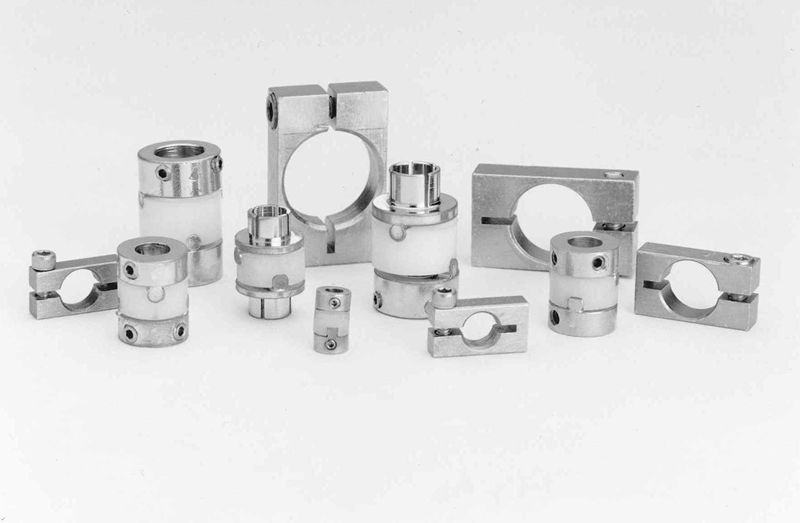
Can I purchase split collars with specific features suitable for use in conveyor systems?
Yes, you can purchase split collars with specific features tailored for use in conveyor systems. Split collars are commonly used in conveyor applications to secure pulleys, rollers, and other components to shafts. Here are the specific features and considerations for selecting split collars for conveyor systems:
- 1. Corrosion Resistance: In conveyor systems, which often operate in industrial environments, it’s essential to choose split collars made from materials with excellent corrosion resistance. Stainless steel split collars are a popular choice due to their resistance to rust and corrosion.
- 2. Self-Locking Mechanism: Some split collars are designed with self-locking features that prevent them from loosening over time. This is particularly important in conveyor systems to maintain the tight fit of components.
- 3. Quick Release: Quick-release split collars allow for easy installation and replacement of components, reducing maintenance downtime in conveyor systems. Look for collars with user-friendly locking mechanisms.
- 4. Precision Positioning: Conveyor systems require precise component positioning. Split collars with accurate clamping and positioning capabilities help maintain alignment and reduce tracking issues with conveyor belts.
- 5. Material Compatibility: Ensure that the split collars you choose are compatible with the materials used in your conveyor system, such as steel, aluminum, or plastic. The collar material should not cause wear or damage to the shaft or components.
- 6. Load Capacity: Consider the load-bearing capacity of the split collars. Conveyor systems may carry significant loads, so it’s important to select collars that can handle the expected loads without deformation or slippage.
- 7. Food-Grade Options: In conveyor systems used in food processing or pharmaceutical industries, it’s crucial to choose food-grade split collars that meet hygiene and safety standards. These collars are typically made from materials approved for such applications.
- 8. Dust and Debris Resistance: Conveyor systems in industrial settings often encounter dust and debris. Look for split collars that are designed to resist the ingress of particles, maintaining smooth operation.
- 9. Size and Shaft Compatibility: Ensure that the split collars you select are the right size for your conveyor system’s shafts. Consider the shaft diameter, width, and collar size to achieve a secure fit.
- 10. Technical Support: Collaborate with split collar manufacturers or suppliers who can provide technical support and guidance in choosing the most suitable collar features for your conveyor application.
When purchasing split collars for conveyor systems, it’s essential to consider the specific requirements of your application, including environmental conditions, load capacity, and the type of materials being conveyed. This ensures the smooth and reliable operation of your conveyor system.
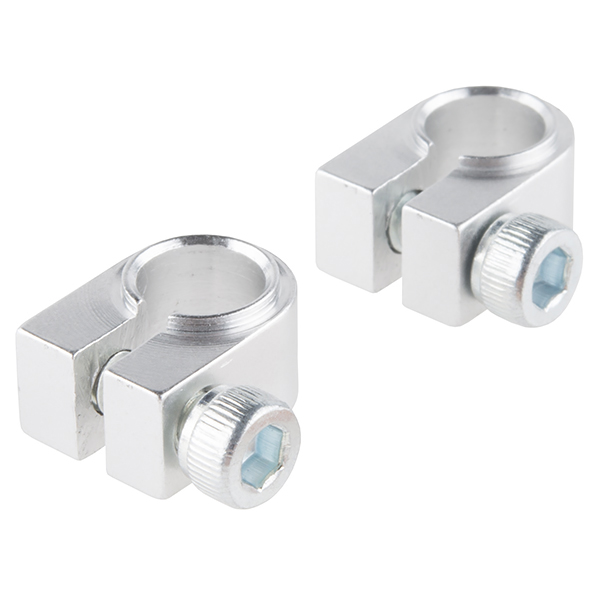
Are there educational resources on the advantages of split collars in terms of ease of installation and adjustment?
Yes, there are educational resources available to learn about the advantages of split collars in terms of ease of installation and adjustment. These resources can provide valuable information on the benefits and best practices. Here’s where you can find them:
- 1. Manufacturer Websites: Many split collar manufacturers have informative websites that include product guides, datasheets, and educational materials. These resources often explain how split collars offer ease of installation and adjustment.
- 2. Online Videos: Video-sharing platforms like YouTube feature instructional videos and tutorials on the installation and adjustment of split collars. These videos can visually demonstrate the process and advantages.
- 3. Technical Manuals: Manufacturers often provide technical manuals and user guides with their products. These documents contain detailed instructions and insights into the ease of installation and adjustment.
- 4. Industrial Forums and Communities: Online forums and community websites related to machinery and engineering frequently discuss the benefits of split collars. You can find user experiences and advice on installation and adjustment.
- 5. Educational Institutions: Engineering and technical schools may include split collar installation and adjustment as part of their coursework. Course materials and lab manuals can be excellent resources.
- 6. Industry Publications: Magazines, journals, and publications in the engineering and manufacturing sectors often feature articles on various components, including split collars. These articles can highlight their advantages.
- 7. Trade Associations: Industry-specific trade associations may offer educational resources, webinars, or seminars that cover the benefits and practical aspects of using split collars.
- 8. Online Articles and Blogs: Many technical websites and engineering blogs publish articles explaining the advantages of split collars and providing tips for installation and adjustment.
- 9. Supplier Websites: Suppliers of split collars often include information on their websites about the advantages of these components, including ease of installation and adjustment.
- 10. Webinars and Seminars: Look for webinars and seminars hosted by experts in the field of mechanical engineering. These events may focus on specific components like split collars.
By exploring these educational resources, you can gain a deeper understanding of how split collars simplify the installation and adjustment process in various machinery and mechanical applications.
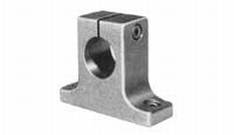
What are the key differences between split collars and other types of shaft collars like set-screw collars?
Split collars and set-screw collars are both used to secure components on shafts, but they have several key differences that impact their performance and application. Here are the main differences between these collar types:
- 1. Design: Split collars have a two-piece design with a break, allowing them to be easily installed and removed without disassembling other components. Set-screw collars are one-piece collars with a threaded set screw that clamps onto the shaft.
- 2. Installation: Split collars are typically easier to install and remove because they don’t require tools. Set-screw collars, on the other hand, require tools like Allen wrenches to tighten the set screw against the shaft.
- 3. Reusability: Split collars are generally more reusable. They can be removed and reinstalled multiple times without damaging the collar or shaft. Set-screw collars can cause damage to the shaft over time, making them less reusable.
- 4. Shaft Damage: Set-screw collars can mar or deform the shaft due to the pressure applied by the set screw. Split collars distribute pressure more evenly, reducing the risk of shaft damage.
- 5. Precision: Split collars provide precise positioning on the shaft and are ideal for applications that require accurate alignment of components. Set-screw collars may have less precision due to the set screw’s nature.
- 6. Holding Power: Set-screw collars often provide higher holding power and are suitable for applications with significant loads and torque. Split collars may have slightly lower holding power in comparison.
- 7. Space Requirements: Split collars are more space-efficient as they do not require additional space beyond their own length. Set-screw collars may need extra space to accommodate the set screw and tools for installation and removal.
- 8. Maintenance: Split collars simplify maintenance tasks by allowing quick access to the shaft. In contrast, set-screw collars may require more time and effort to disassemble and reassemble equipment for maintenance.
- 9. Material: Both split collars and set-screw collars are available in various materials, including steel, aluminum, and plastic. Material choice depends on the specific application requirements.
- 10. Cost: In general, split collars are more cost-effective due to their ease of use and reusability. Set-screw collars may be slightly more expensive, considering the cost of tools and potential shaft damage.
The choice between split collars and set-screw collars depends on the specific application’s requirements, including precision, reusability, holding power, and ease of maintenance. It’s essential to consider these differences when selecting the right type of collar for your application.


editor by Dream 2024-05-16
China Best Sales Custom Quick Release Single Double Split Clamping Shaft Collar eccentric shaft collar
Product Description
Product Description
ONE-PIECE
One-piece shaft collars wrap around the shaft for even distribution of clamping forces. This results in a tight fit and greater holding power, without the shaft damage caused by set screws. Clamp collars are easy to remove, indefinitely adjustable, and work well on virtually any shaft. we uses carefully selected materials and proprietary processes on its one-piece collars to ensure the clamping gap remains open for simpler and more precise adjustment, installation and fit. we manufactures one-piece clamp shaft collars in 12L15 lead-free steel with a zinc or proprietary black oxide finish, 303 and 316 stainless steel, high-strength 2571 aluminum, and engineered plastic. Bore sizes range from 1/8″ to 6″ and 3mm to 150mm.ONE-PIE
1.materials:stainless steel,alloy steel ,aluminum ,brass etc.
2.Finish: Zinc plating, Nickel plating,nature
3.competitive price ,prompt delivery
4.OEM service as your drawings
Technics
1.Milling 2.grinding 3.Turning 4.wire-cutting 5.CNC bending 6.CNC machining 7.Stamping 8.forging 9.boring 10.broaching and so on .
Accuracy
1.Milling:0.01mm 2.Turning:0.01mm 3.Grinding:0.002mm 4.Wire-cutting :0.005mm 5.CNC Machining : 0.005mm
Company Profile
RunCheng Import and Export Co., Ltd is the leading professional OEM/ODM manufactory of auto parts, hardware, graphite products, sanitary ware and mechanical items. Product ranges include CNC machining parts, casting parts, stamping parts, forged parts, turning parts, pipe fitting, rubber parts, CZPT and many more.
We ensure the highest quality by using only the highest quality raw materials and by subjecting all our products to a rigorous Quality Control System. The quality control of our large-scale production process conforms to ISO9001 standards.
We have won the trust of our clients with our top quality products and outstanding service.
Our business is built on the following 4 advantages, namely Full range of products, Top quality, Outstanding service and Reasonable price!
Contact us at once and let′ S do mutually beneficial business together!
Production ability
|
EQUIPMENT LIST |
||||
|
NAME
|
SPECIFICATION |
BRAND |
ORIGINAL PLACE |
QUANTITY |
|
CNC Machines |
Graph 600 |
KNUTH |
CHINA |
20 |
|
1370 |
KAFO |
TAPAN |
20 |
|
|
EDM Machines |
ZNC450 |
BHangZhouNA |
ZheJiang |
20 |
|
ZNC430 |
BHangZhouNA |
ZheJiang |
30 |
|
|
Grinding Machines |
ACC-350ST |
BESFORD |
CHINA |
50 |
|
Auto Lathe Machining |
L150G-II |
OKUMA |
CHINA |
80 |
|
Wire Cutting Machines |
DK7732 |
NEW FAST |
CHNA |
30 |
|
Milling Machine |
SHCM-97A |
GENTIGER |
ZheJiang |
20 |
|
CMM Machine |
CRT-PA574 |
MITUTYO |
JAPAN |
10 |
|
Hardness Tester |
TILO-T60 |
MITUTYO |
JAPAN |
5 |
Productions showing:
Equipments & Working plant:
Worry about our quality problem?
We are an IATF16949:2016 Certifed supplier, strictly execute inspection on ISO quality control system. All our products will pass 10-step inspections: it starts from incoming material inspection to IPQC, then FQC and final inspection with reports before shipment.
Packaging & Shipping
Generally carton or wooden case or plastic foam with standard export wooden pallet , or as per consumer’s requirements.
Certifications:
Your Satisfaction, Our Motivation!
FAQ
Q1. Are you factory or trading company?
A: We are a customized factory with independent oversea trading office .
Q2.Can you provide sample for us?
A: Yes, free sample is available
Q3. What raw material do you use?
A: Stainless Steel, Carbon Steel, Mild Steel, Galvanized Steel, Aluminum alloy, brass, copper, Aluminum etc.
Q4. What finishes can you provide?
A: powder coating, polishing, zinc/nickel /chrome plating, painting, anodized, hot dip galvanized, sandblasted etc.
Q5. How do you ensure quality control?
A: We inspect every process based on your drawings or samples and also check the products before packing
Q6. Is small quantity available?
A: Yes, Small quantity for trial order is available.
Q7. How do you ship the goods?
A: We have our cooperation forwarder, they can deliver the goods to you in very short time with competitive price, and you can ship by your own agent as your convenience.
Q8. How about your delivery time ?
A: 3-10 days for samples and 15-45 days for mass production .
Q: How To Place A Order?
* You send us drawing or sample
* We make the sample and send it to you
* You think the sample is good then place an order and pay us 30% deposit
* We start to make the product
* When the goods is done, we take photoes for your check and you then pay the balance
* We deliver the products to courier company
/* January 22, 2571 19:08:37 */!function(){function s(e,r){var a,o={};try{e&&e.split(“,”).forEach(function(e,t){e&&(a=e.match(/(.*?):(.*)$/))&&1
| Application: | Auto and Motorcycle Accessory, Machinery Accessory, Transmission |
|---|---|
| Standard: | GB, EN, JIS Code, TEMA, ASME, Customed |
| Surface Treatment: | Anodizing |
| Production Type: | Mass Production |
| Machining Method: | CNC Turning |
| Material: | Nylon, Steel, Plastic, Alloy, Aluminum, Cold Forming Steel |
| Samples: |
US$ 10/Piece
1 Piece(Min.Order) | |
|---|
| Customization: |
Available
| Customized Request |
|---|

Are there tutorials available on selecting the right split collar based on environmental conditions?
Yes, you can find tutorials and educational resources on selecting the right split collar based on environmental conditions. Choosing the appropriate split collar is crucial to ensure optimal performance in different environments. Here’s where to find tutorials and guidance:
- 1. Manufacturer Websites: Many split collar manufacturers provide resources on their websites, including selection guides. These guides often consider factors like temperature, humidity, and chemical exposure to help you choose the right collar for your specific environment.
- 2. Online Engineering Communities: Engineering forums and communities frequently discuss the selection of components, including split collars. You can ask questions and gather insights from experienced engineers regarding environmental considerations.
- 3. YouTube and Video Platforms: Video tutorials on platforms like YouTube can provide visual guidance on selecting split collars for specific environmental conditions. These videos may include real-world examples and case studies.
- 4. Technical Manuals and Guides: Manufacturers often include detailed technical manuals and guides with their products. These documents can provide in-depth information on selecting split collars based on environmental factors.
- 5. Industry Associations: Industry-specific associations and organizations may offer resources and publications that address the selection of components like split collars for particular environments, such as aerospace, marine, or food processing.
- 6. Online Retailers: Some online retailers provide selection tools and guidelines to help customers choose the right split collar based on environmental conditions. These tools often include filter options for material and environment type.
- 7. Engineering Schools and Institutions: Educational institutions may offer courses or seminars that cover component selection, including split collars, for various environments. Check with local universities or technical schools for educational resources.
- 8. Supplier Consultation: Contacting split collar suppliers directly can be a valuable resource. They can provide expert advice and recommendations based on your specific application and environmental challenges.
- 9. Online Articles and Blogs: Technical websites and engineering blogs may feature articles that discuss the selection of split collars in different environments. These articles often provide practical insights and tips.
- 10. Webinars and Seminars: Look for webinars and seminars conducted by industry experts and suppliers. These events may cover the selection process and considerations for split collars in varying environmental conditions.
When selecting split collars based on environmental conditions, consider factors such as temperature, moisture, chemicals, abrasion, and exposure to corrosive elements. It’s essential to choose collars that are compatible with the specific challenges your machinery or equipment will face in its operating environment.
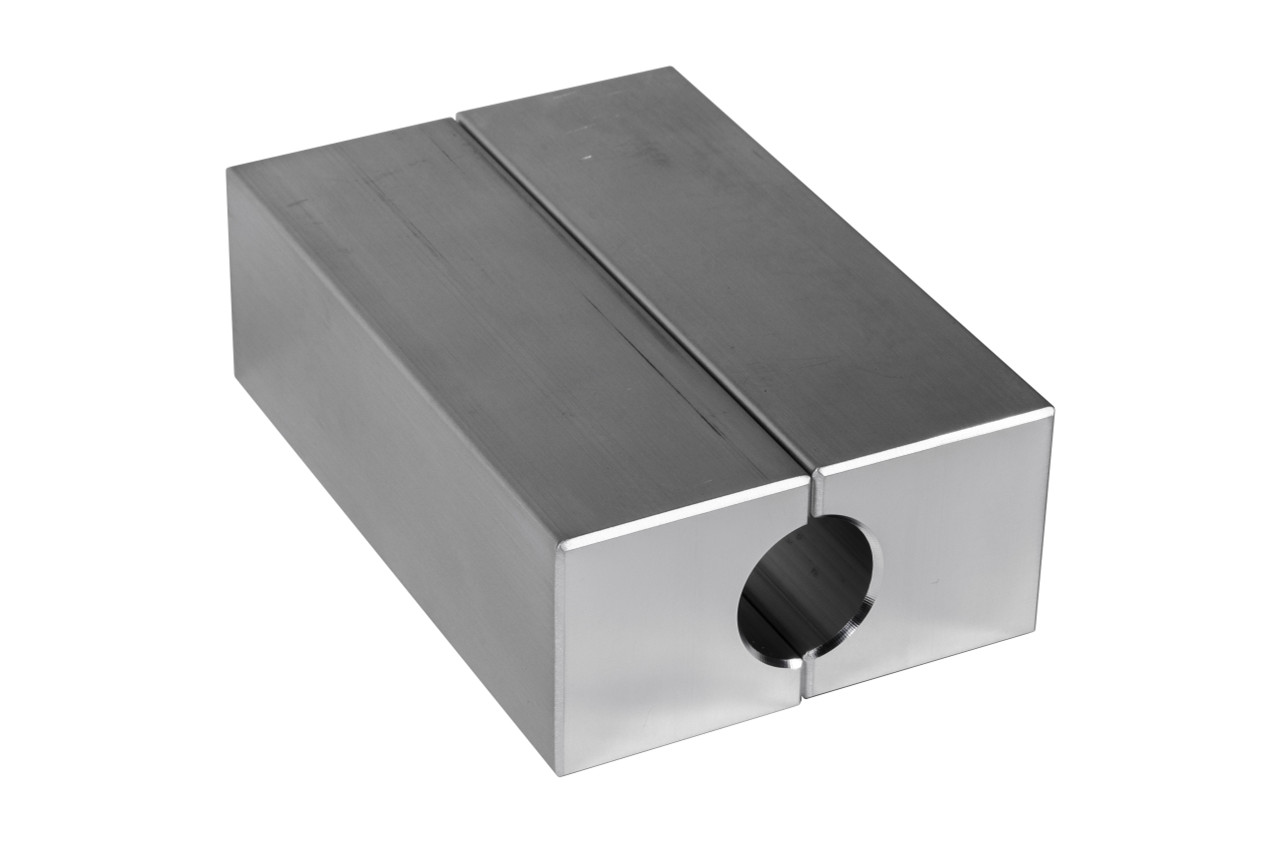
Can you provide recommendations for cost-effective split collars catering to different budget constraints?
Cost-effective split collars are available to cater to various budget constraints. Here are some recommendations based on different budget levels:
- 1. Economy Split Collars: For tight budgets, consider economy split collars made from materials like steel or zinc-plated steel. These collars are cost-effective and provide reliable performance for many applications.
- 2. Plastic Split Collars: Plastic split collars, such as those made from nylon or acetal, are often affordable and suitable for budget-conscious projects. They are lightweight and corrosion-resistant.
- 3. Single-Split Collars: Single-split collars are generally more budget-friendly than double-split or triple-split versions. While they provide effective shaft clamping, they may have slightly lower holding power.
- 4. Basic Materials: Opt for split collars made from basic materials, such as steel or aluminum, without specialized coatings or treatments. These collars are economical while meeting standard requirements.
- 5. Bulk Purchases: Buying split collars in bulk can lead to cost savings. Suppliers often offer discounts for larger quantity orders, making it a cost-effective choice for businesses with high usage.
- 6. Off-Brand or Generic Options: Consider off-brand or generic split collars from reputable suppliers. These alternatives can be more affordable than well-known brand names while still meeting quality standards.
- 7. Online Marketplaces: Explore online marketplaces that offer a wide range of split collars. Price comparison and user reviews can help you find affordable options that meet your specific needs.
- 8. Local Suppliers: Check with local industrial suppliers and distributors for cost-effective split collar options. Purchasing locally may save on shipping costs and lead to better deals.
- 9. Consider Material Substitutes: In some cases, you can use a different material or type of collar that is more budget-friendly while still meeting your application requirements. Consult with suppliers for suitable alternatives.
When selecting cost-effective split collars, it’s essential to balance budget constraints with the specific requirements of your application. While cost savings are important, ensure that the chosen collars meet safety, performance, and durability standards for your project.
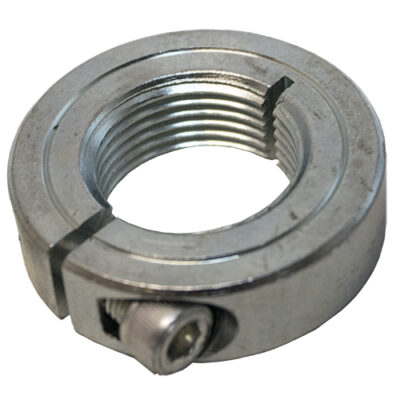
Can you recommend split collars suitable for applications with limited installation space?
Absolutely, there are split collars specifically designed for applications with limited installation space. These compact and space-efficient collars offer reliable performance in tight quarters. Here are some recommendations:
- 1. Thin-Line Split Collars: Thin-line split collars are engineered to have a reduced profile, making them ideal for applications with limited space. They are available in various materials and are designed for easy installation and removal.
- 2. Low-Profile Split Collars: Low-profile split collars are designed to be shorter in height, allowing them to fit into tight spaces without protruding. These collars are commonly used in compact machinery and equipment.
- 3. Clamping Lever Split Collars: Split collars with clamping levers provide a secure grip while offering quick and tool-free adjustments. The lever design is efficient in applications where accessibility is limited.
- 4. Set Screw Miniature Split Collars: Miniature split collars equipped with set screws are designed for small shaft sizes and limited space. They provide a strong hold without compromising space requirements.
- 5. Threaded Split Collars: Threaded split collars are compact and can be installed using simple hand tools. They are suitable for applications where you need a secure fit in confined spaces.
- 6. Plastic Split Collars: Some plastic split collars, such as those made from acetal or nylon, are compact and lightweight. They are corrosion-resistant and ideal for applications with size constraints.
- 7. Step Bore Split Collars: Split collars with a step bore design provide a smaller contact area on the shaft, making them space-efficient. They are effective for securing components in limited spaces.
- 8. Double Split Collars: Double split collars offer exceptional holding power while maintaining a compact design. They are often used in applications where space is a premium.
When selecting a split collar for applications with limited installation space, consider factors such as the shaft diameter, material compatibility, and the available height and width for collar installation. Additionally, always refer to the specific manufacturer’s recommendations and product specifications to ensure a proper fit.


editor by CX 2024-04-04
China wholesaler Quick Release Split Type Inch and Metric Steel Shaft Collar Black Oxide eccentric collar shaft lock
Product Description
Features
1. Material: Steel, Stainless Steel, Aluminum or other specified materials.
2. Surface Treatment: Black Oxide, Zinc Plated, Self Colour Oiled or other specified treatment.
3. Model NO.: Single Split: M1P3 – M1P24 in metric, L1P12 – L1P175.
Double Split: M2P3 – M2P24 in metric, L2P12 – L2P175.
4. Width Tolerance: +0.076mm/-0.254mm (Meric), +0.003″/-0.571″ (Inch).
5. Bore Tolerance: +0.050mm/+0.012mm (Meric), up to 3-1/4″ : +0.001″ to +0.004″ (Inch), over 3-1/4″ : +0.0015″ to +0.0075″(Inch).
6. Processes: Broaching/ Hobbing/ Slotting/Tapping.
7. Package: Plastic Bag, Neutral Box, Plywood Case
8. Lead time: 20-35 days.
9. ISO9001:2008 Certificated.
Our Advantages
1.Effective on hard and soft shafts.
2.Cost effective collar design.
3.Easily installed where major disassembly would otherwise be required Simply slide these collars onto a shaft and tighten the set screw to hold the collar in place.Collars are easy to adjust with their set screws.
Applications
Single split shaft collars are used in a variety of application and industries. Examples include agricultural implements, office machines, exercise equipment, mixers, and printing presses.A variety of specialized products are available. Knurled shaft collars provide a friction surface for hand gripping and are suitable for conveyors and other applications which require frequent collar adjustment.
Hexagonal-bore shaft collars are suitable for power transmission and drive applications.
Heavy-duty shaft collars feature large cross sections and sturdy clamping screws for added holding power.
Because heavy-duty shaft collars provide better vibration and shock resistance,
they are designed for applications such as off-road, mining, paper and steel mill equipment.
| Packing&Shipping | |
| Package | Standard suitable package / Pallet or container. Polybag inside export carton outside, blister and Tape and reel package available. If customers have specific requirements for the packaging, we will gladly accommodate |
| Shipping |
10-20working days ofter payment receipt comfirmed (based on actual quantity). Professional goods shipping forward. |
About MIGHTY
ZheJiang Mighty Machinery Co., Ltd. specializes in manufacturing Mechanical Power Transmission Products.We Mighty is the division/branch of SCMC Group, which is a wholly state-owned company, established in 1980.
About Mighty:
-3 manufacturing factories, we have 5 technical staff, our FTY have strong capacity for design and process design, and more than 70 workers and double shift eveyday.
-Large quality of various material purchase and stock in warhouse which ensure the low cost for the material and production in time.
-Strick quality control are apply in the whole production.
we have incoming inspection,process inspection and final production inspection which can ensure the perfect of the goods quality.
-14 years of machining experience. Long time cooperate with the Global Buyer, make us easy to understand the csutomer and handle the export. MIGHTY’s products are mainly exported to Europe, America and the Middle East market. With the top-ranking management, professional technical support and abundant export experience, MIGHTY has established lasting and stable business partnership with many world famous companies and has got good reputation from CZPT customers in international sales.
FAQ
Q: Are you trading company or manufacurer?
A: We are factory.
Q: How long is your delivery time?
A: Generally it is 5-10 days if the goods are in stock. or it is 15-20 days if the goods are not in stock, it is according to quantity.
Q: Do you provide samples ? is it free or extra ?
A: Yes, we could offer the sample for free charge but do not pay the cost of freight.
Q: What is your terms of payment ?
A: Payment=1000USD, 30% T/T in advance ,balance before shippment.
We warmly welcome friends from domestic and abroad come to us for business negotiation and cooperation for mutual benefit. To supply customers excellent quality products with good price and punctual delivery time is our responsibility.
/* March 10, 2571 17:59:20 */!function(){function s(e,r){var a,o={};try{e&&e.split(“,”).forEach(function(e,t){e&&(a=e.match(/(.*?):(.*)$/))&&1
| Standard: | DIN, ANSI, GB, JIS |
|---|---|
| Material: | Steel, Stainless Steel, Aluminum |
| Connection: | Welding |
| Surface Treatment: | Black Oxide, Self Colour Oiled, Zinc Plated |
| Head Type: | Allotype |
| Delivery: | 2~7 Days for Stock,15~45 Days for Without Stock |
| Samples: |
US$ 1/Piece
1 Piece(Min.Order) | |
|---|
| Customization: |
Available
| Customized Request |
|---|
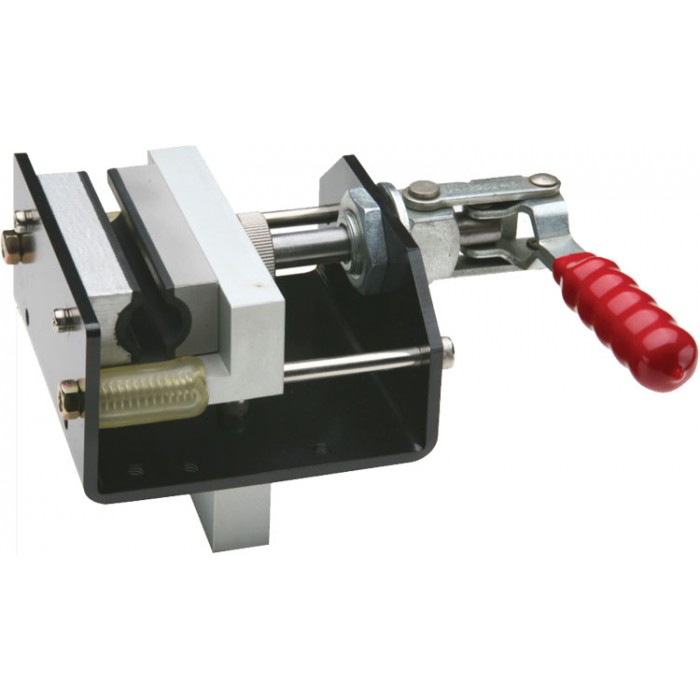
What are the best practices for maintaining split collars in corrosive environments?
Maintaining split collars in corrosive environments is essential to ensure their longevity and optimal performance. Here are best practices for maintaining split collars in such conditions:
- 1. Material Selection: Choose split collars made from corrosion-resistant materials. Stainless steel or plastic collars are often suitable for corrosive environments due to their resistance to rust and corrosion.
- 2. Regular Inspection: Conduct routine inspections to check for signs of corrosion or wear on the split collars. Early detection of issues allows for timely maintenance.
- 3. Lubrication: Apply a suitable lubricant to the collar’s interior surface and the shaft. Lubrication can help reduce friction and prevent corrosion. Choose a lubricant compatible with the collar material and the environmental conditions.
- 4. Gasket Seals: In highly corrosive environments, consider using split collars with gasket seals. These seals provide an additional layer of protection against moisture and corrosive agents.
- 5. Protective Coatings: Some split collars can be coated with corrosion-resistant materials or coatings. These coatings enhance their resistance to corrosive elements.
- 6. Regular Cleaning: Clean the split collars and the surrounding components regularly to remove any accumulated corrosive substances, dirt, or debris. Use appropriate cleaning agents that won’t harm the collar material.
- 7. Tightening Checks: Periodically check the tightness of split collars to ensure they remain secure on the shaft. Corrosion can weaken the grip over time, so re-tighten as necessary.
- 8. Environmental Sealing: If possible, create an environmental barrier or enclosure around the machinery or equipment to minimize exposure to corrosive elements. This can help extend the life of split collars.
- 9. Replacement of Damaged Collars: If a split collar shows significant signs of corrosion or wear, consider replacing it with a new one. Regularly replace any gasket seals if they deteriorate.
- 10. Training and Education: Ensure that maintenance personnel are trained and educated on the best practices for maintaining split collars in corrosive environments. Knowledge of proper maintenance procedures is crucial.
By following these best practices, you can prolong the life of split collars in corrosive environments and maintain the reliability of your machinery or equipment. It’s important to adapt maintenance routines based on the specific environmental challenges your machinery faces.

Are there guidelines for lubricating and maintaining split collars to ensure optimal performance?
Maintaining split collars is essential to ensure their optimal performance and longevity. Here are guidelines for lubricating and maintaining split collars:
- 1. Lubrication: Lubrication helps reduce friction, prevents galling, and enhances the performance of split collars. Consider the following when applying lubrication:
- a. Select the Right Lubricant: Choose a lubricant suitable for your application and material of the split collar. Common options include dry film lubricants, oils, and greases.
- b. Apply Lubricant Sparingly: Apply a thin, even layer of lubricant to the inside diameter of the split collar where it contacts the shaft. Avoid overapplication, as excess lubricant can attract contaminants.
- c. Reapply as Needed: Regularly check the condition of the lubrication and reapply as necessary, especially in high-load or high-speed applications.
- d. Clean Before Relubricating: Before reapplying lubricant, clean the collar and shaft to remove any old or contaminated lubricant. This ensures the new lubricant functions effectively.
- 2. Regular Inspection: Periodically inspect the split collars for wear, damage, or misalignment. Look for signs of wear, such as grooving or scoring on the inner surface, and replace collars if necessary.
- 3. Proper Installation: Ensure split collars are installed correctly, with the two halves aligned. Misalignment can lead to uneven pressure distribution and reduced performance.
- 4. Tighten Securely: When installing split collars with set screws or clamping mechanisms, tighten them securely to prevent slippage or movement on the shaft.
- 5. Replace Damaged Components: If you notice any damaged or worn components, such as set screws or clamping screws, replace them promptly to maintain collar performance.
- 6. Environmental Considerations: Be aware of the operating environment. In harsh conditions, such as those with exposure to moisture or chemicals, select collars with appropriate materials and consider additional sealing mechanisms.
- 7. Corrosion Prevention: Use corrosion-resistant split collars when applicable. Regularly inspect and maintain collars in corrosive environments to prevent degradation.
- 8. Reusability: If the collars are designed for reuse, follow proper disassembly and reassembly procedures. Avoid damaging threads or critical components during disassembly.
- 9. Training and Knowledge: Ensure that personnel responsible for maintenance and installation are adequately trained and knowledgeable about split collars and their specific requirements.
Following these guidelines for lubrication and maintenance will help ensure the optimal performance and extended lifespan of split collars in various applications.
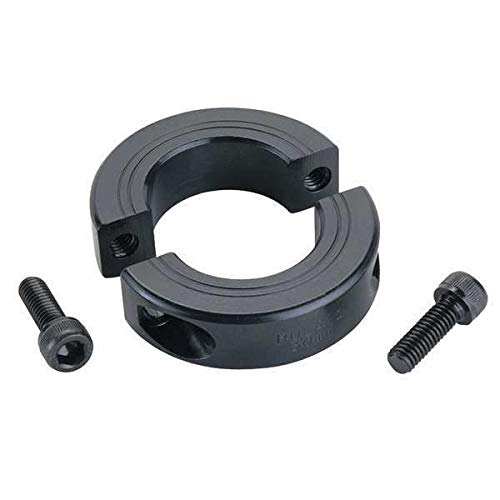
Where can I find reliable suppliers for high-quality split collars suitable for various applications?
Finding reliable suppliers for high-quality split collars is essential to ensure the performance and reliability of your mechanical assemblies. Here are some sources to help you locate reputable suppliers:
- 1. Industrial Supply Companies: Established industrial supply companies often stock a wide range of mechanical components, including split collars. You can contact these companies and inquire about their product offerings and suppliers.
- 2. Online Marketplaces: Online marketplaces like Amazon, eBay, and Alibaba have numerous sellers offering split collars. Read product descriptions, reviews, and seller ratings to make informed decisions.
- 3. Manufacturer Websites: Visit the official websites of split collar manufacturers. Many manufacturers provide information about their products, specifications, and contact details for inquiries and purchases.
- 4. Local Distributors: Check if there are local distributors or dealers in your area who supply mechanical components, including split collars. Working with local distributors can provide convenience and support.
- 5. Industrial Trade Shows: Attend industrial trade shows and exhibitions related to mechanical components. These events often feature suppliers and manufacturers showcasing their products, allowing you to assess the quality of split collars in person.
- 6. Online Industrial Directories: Online industrial directories, such as Thomasnet and GlobalSpec, can help you search for suppliers and manufacturers of split collars based on your specific requirements.
- 7. Recommendations from Peers: Seek recommendations from colleagues, peers, or industry professionals who have experience with split collars. They can provide valuable insights into reputable suppliers.
- 8. Industry Associations: Contact industry-specific associations related to your field. They may have lists of approved suppliers and manufacturers of mechanical components, including split collars.
- 9. Specialty Suppliers: Some suppliers specialize in specific types of split collars or offer customized solutions. Explore specialty suppliers to find collars tailored to your unique application needs.
- 10. Reviews and Ratings: Utilize online reviews and ratings on platforms like Trustpilot or industry forums to assess the reputation and reliability of suppliers. High ratings and positive reviews are indicators of trustworthiness.
- 11. Request Samples: Some suppliers may offer samples or trial products to help you evaluate the quality of their split collars before making a bulk purchase.
When sourcing high-quality split collars, it’s crucial to consider factors such as material quality, precision engineering, and compliance with industry standards. Always communicate with potential suppliers to discuss your specific requirements and assess their ability to meet your needs.


editor by CX 2024-01-11
China factory ODM/OEM 4/5 Axis Customized Mechanical Parts CNC Machining for Medical Instruments Tools and Car Aerospace Parts eccentric collar shaft lock
Product Description
FAQ
Q: What is the payment method?
A: We accept TT (Bank Transfer), Western Union, L/C.
1. For total amount under US$2000, 100% in advance.
2. For total amount above US$3000, 30% in advance, the rest before shipment.
Q: What is your MOQ?
A: MOQ depends on our client’s needs, besides,we welcome trial order before mass-production.
Q: What is the production cycle?
A: It varies a lot depending on product dimension,technical requirements and quantity.
We always try to meet customers’ requirement by adjusting our workshop schedule.
Q: What kind of payment terms do you accept?
A: T/T, western union, etc.
Q: Is it possible to know how is my product going on without visiting your company?
A: We will offer a detailed products schedule and send weekly reports with digital pictures
and videos which show the machining progress.
Q: If you make poor quality goods,will you refund our fund?
A: We make products according to drawings or samples strictly until them reach your 100%
satisfaction.And actually we wont take a chance to do poor quality products.We are proud of
keeping the spirit of good quality.
If you are interested in our products, please send Email to us!
Quality First,Price Best,Service Foremost!
| Application: | Fastener, Auto and Motorcycle Accessory, Hardware Tool, Machinery Accessory, Mould Tool |
|---|---|
| Standard: | GB, EN, API650, China GB Code, JIS Code, TEMA, ASME |
| Surface Treatment: | Anodizing |
| Production Type: | Mass Production |
| Machining Method: | CNC Machining |
| Material: | Steel, Plastic, Brass, Alloy, Copper, Aluminum, Iron |
| Samples: |
US$ 25/Piece
1 Piece(Min.Order) | |
|---|
| Customization: |
Available
| Customized Request |
|---|
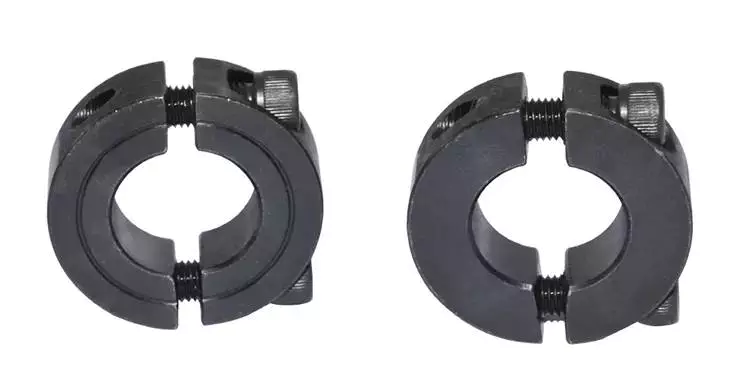
Choosing a Shaft Collar
The shaft collar is a simple machine component used in a variety of power transmission applications. They are most often found on gearboxes and motors. Their simple design makes them an easy component to install and remove. Among other uses, shaft collars are used as bearing faces, mechanical stops, and locating components.
Clamp-style shaft collars
Clamp-style shaft collars fix many of the problems associated with set-screw collars. Available in two-piece and one-piece designs, these collars compress the shaft and lock into place. This allows for a uniform distribution of force on the shaft. Clamp-style shaft collars provide more holding power than set-screw collars, but they work best under consistent pressure. Clamp-style shaft collars also work better against negative forces, as they have a separate, un-tightened side.
Clamp-style shaft collars feature mounting holes in the outer diameter. Like clamp-style collars, mountable shaft collars can be installed on adjacent assemblies, but the mounting method does not affect holding power. Mountable shaft collars are commonly used in mounting sensor brackets. They may have rounded or flat outer diameters to accommodate the mounting process. Mountable shaft collars may also have tapped or flat holes to facilitate installation.
Quick-clamp shaft collars have the same functionality as clamp-style collars, but feature a removable lever. They are typically quick-to-install and do not mar the shaft. Quick-clamping collars are especially beneficial in applications that require light-duty torque. They also make for quick and easy adjustments.
Heavy-duty shaft collars feature larger outer diameters, a wider face, and a larger screw. These collars are ideally suited for d-shafting and can offer greater holding power than set-screw collars. These collars are typically manufactured from high-strength 2024 aluminum.
Clamp-style shaft collars can be used in many different applications. They can be used for a variety of applications, including bearings, and are especially suited for rotary machines. However, there are some drawbacks. While they may not be as flexible as set-screw collars, they can still perform well under constant loads. One drawback is that they tend to loosen under shocks and reduce the holding power of clamping hardware.
Another advantage of clamp-style shaft collars is that they do not mar the shaft and allow for easy positioning adjustments. Furthermore, they are easier to install and offer greater holding power than set-screw collars. These collars are made from high-quality materials with tight tolerances and are available in different bore sizes.
Clamp-style shaft collars are the most common type of shaft collars. They can be two-piece or one-piece. Among these, two-piece collars are the most convenient option. One-piece collars are hard to move, and two-piece collars have a hinge on one side and a clamp-style collar on the other side.
The materials used in Clamp-style shaft collars play a crucial role in their overall performance. They should be strong, corrosion-resistant, and have good holding power. They should also be able to withstand high temperatures. The most common materials used for shaft collars are steel and aluminum. Some types are made from stainless steel, while others are made from engineered plastic.
Clamp-style shaft collars can come in two pieces or single-piece designs. The smaller one-piece collars usually have a back-cut opposite the clamp cut, which reduces the cross-sectional area at the hinge point. This reduces the amount of force required to clamp the collar, which makes it easier to use stronger screws.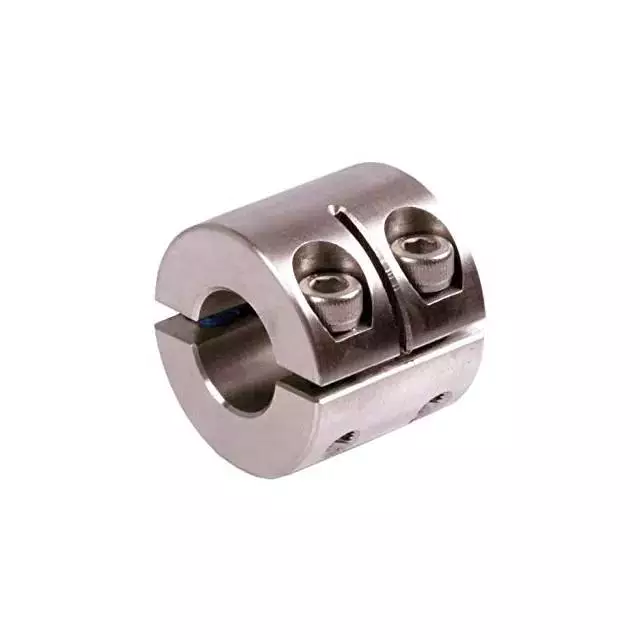
Aluminum, carbon steel, and stainless steel shaft collars
When choosing a shaft collar, you should consider the material it is made of. You can purchase collars made of carbon steel, aluminum, or stainless steel. Each of these materials has its benefits and disadvantages. Steel is more durable than aluminum and tends to provide better holding power. Aluminum, on the other hand, is lighter and has a favorable strength-to-weight ratio. The material you choose should depend on your specific needs, such as corrosion resistance or weight.
Mountable shaft collars are used to mount sensors, fixtures, and other assemblies. These collars are available with outer diameter holes, flats, or quick-release designs. The material used to make these collars varies, with standard models made of 1215 lead-free steel and 2024 aluminum.
When choosing shaft collars, take into account the material and surface treatment. Different materials offer different properties, which will determine the performance of the collar. In addition to material, each shaft collar comes with a different holding power. Holding power is a key factor in choosing a shaft collar because it determines the amount of load it can withstand without slipping. The holding power depends on the screw size, the bore size, and the bulk of the collar.
Aluminum, carbon steel, and stainless steel shaft-collars can come in various styles. CZPT, for example, offers standard shaft collars in hex and d-bore profiles. Hex collars provide extra holding power and are better than set screws. Additionally, they do not mar the shaft and provide a better grip.
Another type of shaft collar is the quick-clamp shaft collar. These features allow users to install and remove them with ease. The quick-clamp collar has a handle that allows the user to quickly adjust it. While these shaft collars are designed for light duty applications, they are not recommended for heavy-duty or high-RPM applications.
Shaft collars are simple yet versatile components. They are used for various applications, including mechanical stops, stroke limiters, and retainers. They can also be used to align and space other components. Shaft collars are widely used in gearbox assemblies, flagpoles, and medical instruments, among others.
Two-piece shaft collars offer the same benefits of one-piece shaft collars, but offer additional convenience and versatility. They are easier to install and disassemble, reducing installation and labor costs. They also offer superior holding power. They also feature a threaded bore that acts as a positive mechanical stop when the shaft is rotated.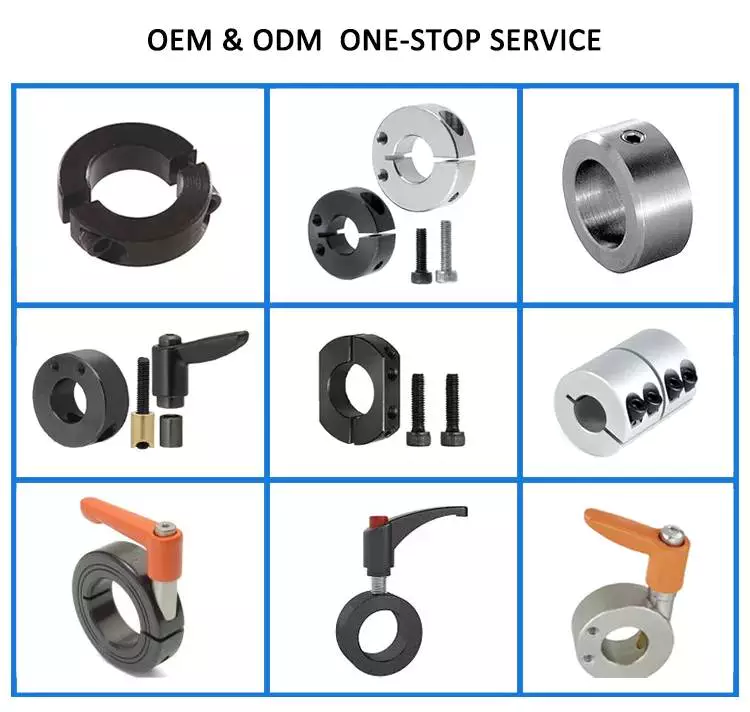
Over-torqueing shaft collars
Shaft collars are often used to secure components on shafts or other surfaces. They also provide an easy way to adjust the positioning of motor assembly components. Many different types of shaft collars are available to meet the specific needs of different applications. These include round, hexagonal, square, and D-bore collars.
The design of shaft collars must account for the load they will support. Some collars are made of metals, while others are made of plastic or composite materials. Typically, shaft collars are made of steel, but can also be made from aluminum or alloyed steel. Some are coated with zinc.
Shaft collars are available in one-piece and two-piece designs. Single-piece collars are designed to fit securely around a shaft, while double-piece collars allow for greater clamping force. These collars can be assembled anywhere along the shaft and can be installed between two pieces. They are available in different bore configurations and can be customized to meet your specific application.
Clamp style collars are easy to install and disassemble, and have a larger holding force than one-piece collars. These collars are also more shock-load resistant. They also don’t mar shaft surfaces, unlike setscrews. They can also be easily adjusted without damaging the shaft. Another style of collar is the quick-clamping style. This type of collar doesn’t mar the shaft, and is easily installed and removed without tools. These are best for light-duty applications.
When choosing a shaft collar, you should consider the tolerance of the shaft. It is important to select a shaft with a tight tolerance. The shaft’s hardness should not be greater than Rockwell C35. A wide tolerance will affect the holding power of the collar. If the shaft is undersized, you may need to use a screwdrive to slide the collar on the shaft.
Shaft collars are a versatile component with many different applications. They can secure industrial railings or serve as positioning devices in medical equipment. They are also widely used in automation machinery. They are used to protect cylinders and actuators and to ensure alignment between components. For this reason, they are very versatile and adaptable.
Clamp-style collars work well under constant loads, but they may need assistance during impact loads. Shock loads can be difficult to avoid, especially if the mass is small. Clamp-style collars with an undercut in the shaft help to resist the impact of shock. Moreover, they offer positive stops in both axial directions.
Clamp-style shaft collars are a good alternative for set-screw collars. They are easy to install and prevent shaft damage. They also come with an added advantage of being easy to adjust. Clamp-style shaft collars have double the holding power of set-screw collars.
In addition to holding components, shaft collars can also function as spacers and limit shaft movement. They are essential for many applications. They are commonly used in motors and gearboxes to ensure correct positioning for power transmission. They are also used to control shaft movement in reciprocating applications.

editor by CX 2023-06-01
China Professional Ea560-25 560A-25 560-25 Mechanical Seals Shaft Size 25mm for Chemical Industry Submersible/Circulating Pumps Car/Sic/Vit eccentric collar shaft lock
Product Description
Structure Description: Rubber bellows design
EA560-25 560A-25 560-25 Mechanical Seals Shaft Size 25mm For Chemical Industry Submersible/Circulating Pumps CAR/SIC/VIT
Mechanical Seal Operating Limits
Pressure: ≤1Mpa
linear velocity: ≤15m/s
Temperature: -30~2
Website: http://akman2006
| Structure: | Single End |
|---|---|
| Pressure: | High Pressure Mechanical Seals |
| Speed: | High-Speed Mechanical Seal |
| Temperature: | High Temperature Mechanical Seal |
| Standard: | Standard |
| Balance: | Unbalanced |
| Customization: |
Available
| Customized Request |
|---|
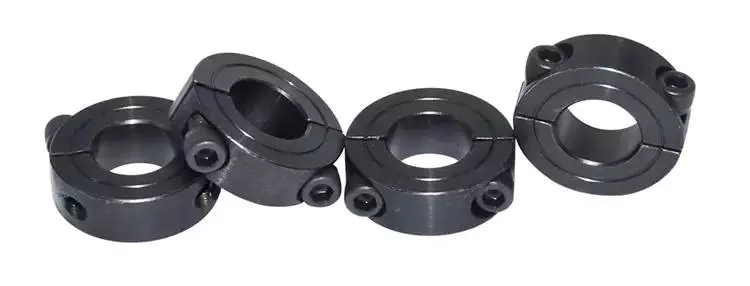
How to Choose the Right Shaft Collar
A shaft collar is a small, inexpensive machine component that serves a variety of purposes in power transmission. It is most commonly used in gearboxes and motors. It can serve as a mechanical stop, bearing face, or locating component. Its simple design makes it easy to install. Here are some of the most common types and their functions.
Function
Shaft collars are an important part of many mechanical systems. These devices hold mechanical components on a shaft and also help mount shafts on flat surfaces. They are available in many different styles, sizes, and materials. Selecting the right shaft collar is essential in preventing damage to components. Stafford Manufacturing, a leading manufacturer of shaft collars and other related mechanical components, can help you choose the right one for your application.
There are two main types of shaft collars. The first is the Heavy Duty type. It has a larger outer diameter and wider opening. While this may seem to increase holding power, the problem with that is that it can reduce the amount of space the collar has on the shaft. On the other hand, the Thin Line type is similar, but is made with smaller outer diameters. Another type is the Threaded Bore shaft collar. These shaft collars offer exceptional axial holding power, and are designed to protect threaded shafts without causing any damage.
A shaft collar has many uses and is typically used in industrial applications. It can act as a spacer and to stop shaft movement in reciprocating applications. It can also be used to align and position parts of automation machinery.
Types
There are several different types of shaft collars. These components are critical for a variety of applications, and their design plays a large role in the performance of the resulting product. To select the most appropriate collar, designers must consider several factors, including the style, material, bore size, and geometry of the shaft. Many manufacturers provide performance data, and users can contact them for assistance.
There are many different types of shaft collars, which make it important to understand how each one works and what applications they can serve. Fortunately, shaft collars are easy to install and require little maintenance. Whether you need to secure industrial railings or position medical equipment, shaft collars are a versatile component that can be tailored to meet your needs.
One type of shaft collar is the locking collar. This type of shaft collar has a threaded end that is designed to mate with spindle bearings. They offer an increased TIR than standard shaft collars and allow for precise preload control. They also feature slots for spanner wrenches.
Sizes
Shaft collars come in a variety of sizes. You can get a small diameter shaft collar for small equipment, or a large diameter shaft collar for larger equipment. Both styles are made from solid steel, and they come in several thicknesses. You can choose between one-half inch and six-inch collars, depending on your needs.
There are no specific standards for shaft collars, but most manufacturers have similar designs. They’re either single-point faced or double-split, and can be fine or coarse threaded. They’re often used as mechanical stops, bearing faces, or as locating components. Their bore is either fine or coarse, and their outside diameter and width are determined by the shaft diameter.
Shaft collars are commonly found in mechanical and automation equipment. These ring-shaped devices hold motor components, sprockets, and bearings in place. They also allow them to be adjusted and positioned precisely. A shaft collar is often used to connect the end of a shaft to a mechanical stop.
Another type of shaft collar is called a set collar. It has a recessed area for a screw to bite into a shaft. These collars are perfect for holding sprocket hubs, bearings, and spacers. They can also be used as a rigid coupling.
Cost
When choosing a shaft collar, consider its intended application and cost. Some shaft collars are very expensive while others are quite affordable. Choose one that meets the needs of your assembly. If you’re using the shaft collar infrequently, a clamp style or a set screw style may be a better choice. Then, you can easily adjust or disassemble it with just a few tools. If you’re using it more frequently, choose a two-piece shaft collar.
The material of the shaft collar is also an important consideration. Steel and stainless steel are common choices. While both materials are strong and durable, steel tends to have better holding power. However, aluminum shaft collars are lighter and provide better strength-to-weight ratio. The type of material you choose depends on the amount of corrosion protection you need, and whether you’ll need the collar to resist extreme temperatures. If the shaft collar is going to be used in a hot environment, you may want to go with a titanium collar.
There are many different sizes and types of shaft collars. The type of collar you choose depends on the specific application and the system it’ll be used in. Consider the dimensions of your shaft, the material of the shaft, and the length of the shaft to find the right fit. If you’re not sure what size you need, ask a manufacturer for help.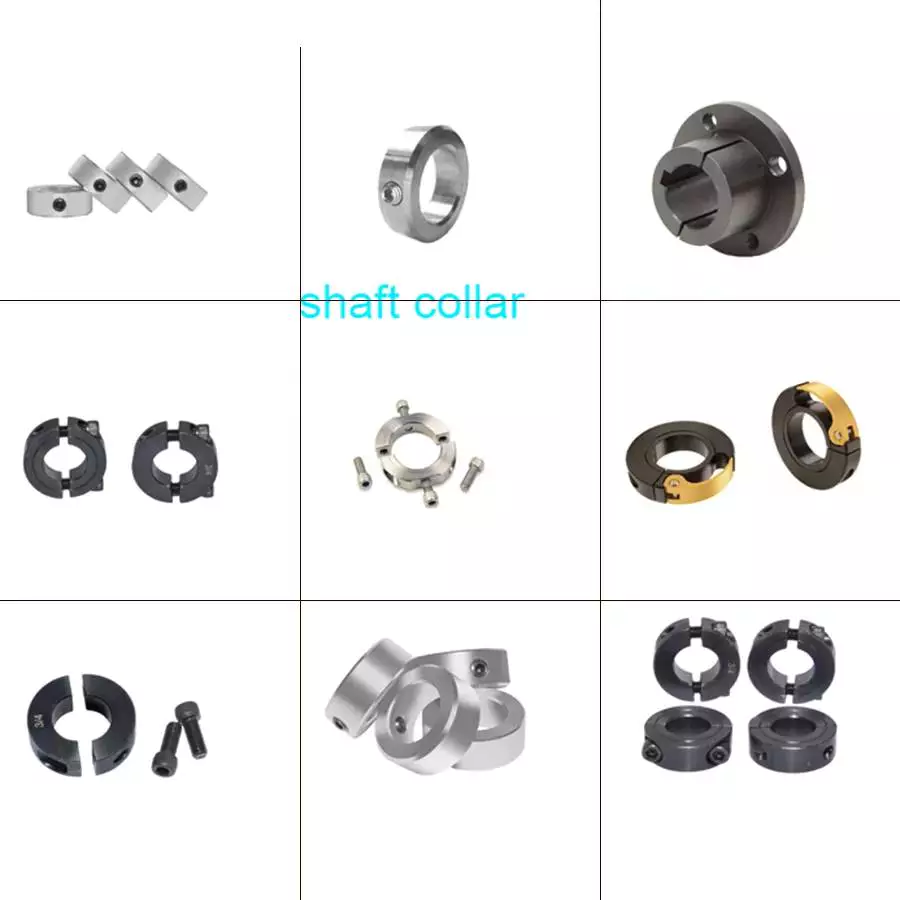
Placement on shaft
In some applications, the placement of the shaft collar can be critical to the overall performance of the machine. The collar’s design must take many factors into account, including material, style, bore size, and shaft geometry. If a user is uncertain of the proper placement of their collar, they should refer to the manufacturer’s website for guidance.
While shaft collars may look simple, they’re actually essential mechanical components that are used in almost every type of machinery. Despite their ubiquitous use in every industry, they are often underappreciated due to their complexity. Many people aren’t aware of their importance or the various types of collars available. This shaft collar guide will provide detailed information to help you find the right shaft collar for your specific application.
The surface treatment of the shaft collar is another important factor that contributes to its holding power. The most common treatment is a black oxide finish. This finish enhances screw torque while preserving the frictional properties of the bore. This finish can be further optimized by applying light oil to the screw. Zinc plating is also a good option for shaft collars. This material offers better corrosion resistance, but can reduce holding power.
Clamp style
A clamp style shaft collar is a simple and effective tool for securing shafts in machine tools. Its two-piece design allows for quick and easy positioning adjustments and has greater holding power than set screw collars. In addition, its friction-based connection maintains ease of use and prevents shaft damage. This type of collar is also more corrosion resistant than set screw collars.
There are several different types of shaft collars, including single and double split collars. Single-piece clamp collars are anchored into the shaft with a single tangential screw, whereas double-piece collars are anchored to the shaft with two socket cap screws. The latter type provides more stability and axial holding power and is suitable for rotating assemblies. A single or double-piece clamp collar can also be threaded to allow for precise positioning along the shaft. Its internal threads also provide enhanced support for high axial loads and act as a positive mechanical stop.
There are different types of shaft collars, each with its own set of advantages and disadvantages. A set-screw collar may be preferred over a clamp-style shaft collar, but it’s not the only choice. A set-screw collar can severely mar the shaft and can prevent fine adjustments. However, it is a good idea to use the torque wrench when tightening a shaft collar.
Zinc plated
Zinc plated shaft collars are available in a variety of sizes. They are precision machined from cold finished steel bar stock and zinc plated for corrosion resistance. They are also very attractive. They are made in the USA. Whether you need a zinc-plated shaft collar for a simple repair or a more complicated installation, Lovejoy has the right solution for your needs.
The CZPT MSP-12-FZ two-piece shaft collar has a 12mm bore, 28mm OD, and 11mm width. Its clamp style design allows you to easily install and remove the shaft collar. It is easily adjustable and is stamped with the CZPT name.

editor by CX 2023-05-05
China Shaft Collar 8Mm Ring Lock 1 4 Collars In Taiwan 3Mm 14 Stainless Steel 316 Locking Conic 30Mm Zinc Plated Standardized eccentric shaft collar
Condition: New
Warranty: Unavailable
Applicable Industries: Hotels, Garment Shops, Building Material Shops, Manufacturing Plant, Machinery Repair Shops, Food & Beverage Factory, Farms, Restaurant, Home Use, Retail, Food Shop, Printing Shops, Construction works , Various good quality motor small star quincunx flexible coupling logo Minow Energy & Mining, Food & Beverage Shops, Advertising Company
Weight (KG): 0.1
Showroom Location: None
Video outgoing-inspection: Provided
Machinery Test Report: Provided
Marketing Type: Ordinary Product
Warranty of core components: 1 Year
Core Components: shaft collar
Structure: Flexible
Material: stainless steel, carbon steel
Coatings: Black Oxide
Torque Capacity: 180
Model Number: sk
After Warranty Service: Spare parts
Port: HangZhou
Machining servicesAll kinds of mechanical parts processing,CNC,lathe processing,milling machine processing,grinder processing,wire cutting processing, drilling machine processing,etc。Surface treatment of parts,anodizing, DLSEALS China factory can customize parts 12mm nylon nylon gear rack plastic OEM hardening anodizing, color anodizing,blackening, chrome plating, nickel plating,titanium plating,zinc plating,color zinc plating, aluminum parts anode white, anode black
| Product name | Shaft collars |
| Material | stainless steel,316stainless steel,45 steel |
| Finish | passivated,black, Factory Brand New 100% Tested LFB479Q X60 CVT Transmission For CZPT X60 Gearbox transmission parts zinc plated |
| Standard | ANSI |
Different Types of Shaft Collars and How to Choose the Right One For Your Needs
A shaft collar is a simple machine component, but its role is crucial in a variety of power transmission applications. It is most commonly found in gearboxes and motors. Its simple design makes it a relatively easy component to install. In addition to being useful for bearing faces, shaft collars are also used as mechanical stops.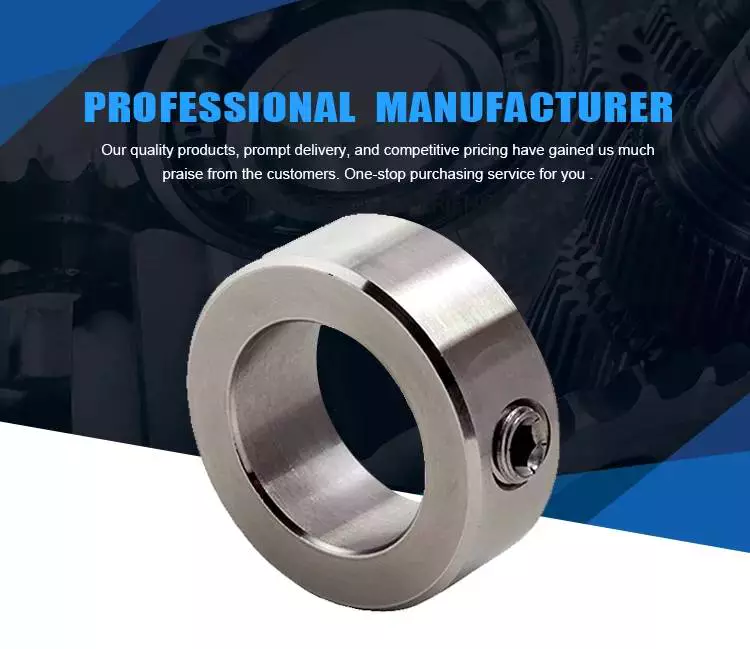
Single split shaft collars
Single split shaft collars are a common design choice for industrial applications. They provide easy installation and disassembly, reducing downtime and labor. Unlike traditional collars, they use full seating torque of set screws, resulting in even distribution of forces along the shaft circumference. In addition, they provide stronger holding power.
Single split shaft collars are available in a variety of sizes and materials. They are typically made of stainless steel, alloyed steel, or nylon. They are available with a black oxide finish or a smooth finish. In addition, they can be manufactured to custom sizes. The benefits of shaft collars manufactured by Power Rite are the high quality of their materials and the close tolerances of their manufacturing process.
Single split shaft collars are available in D-bore or hex bore configurations. They are designed to fit shafts with diameters from 1/4″ to 6″. Some of these types also have a proprietary black oxide finish. Single split shaft collars can be manufactured with a range of materials, including 303 stainless steel and 1215 lead-free steel. They can also be made with engineered plastic.
Single split shaft collars are an excellent choice for applications where accurate positioning is essential. These collars can be easily installed and removed without removing any of the shaft components. They feature double grub screws to help tighten the clamp around the shaft. This feature makes installation and removal easier and reduces downtime.
Single split shaft collars are also available in a lightweight style for applications where space is an issue. While these collars are ideal for light-duty applications, they are not ideal for heavy-duty environments. Single split shaft collars are generally made of a softer material, such as steel. They have high torque capacities and hold securely around a shaft. However, their high holding power and low friction means they can damage a shaft or cause indentations that make repositioning the shaft difficult.
Clamp-style shaft collars are another option for tougher installations. This type offers more clamping power than a one-piece shaft collar. They come in either a one-piece or two-piece design, and can be installed by hand.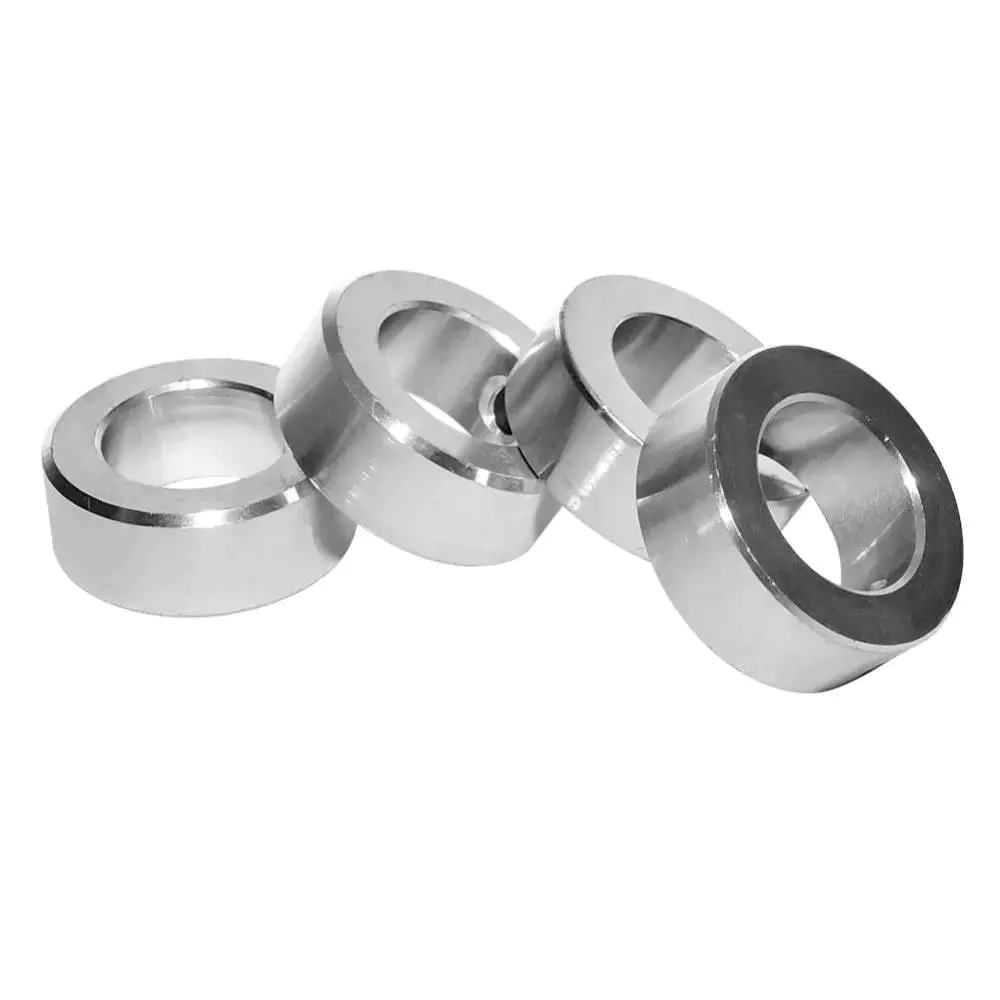
Set screw collars
Set screw collars are used to secure shafts. They are available in a variety of sizes and materials. Available options include hex socket, cup point, and 3A thread screws. They are suitable for a variety of industries, including food, wood, and chemical. A distributor of set screw collars can custom-design them to meet the specifications of a given application.
There are many different types of shaft collars, which include socket set screw collars, 2-hole set screw collars, and metric and stainless steel collars. In addition to these, you can also find corrosion-resistant set screw collars with a black oxide finish. These collars are ideal for industrial and commercial applications and are RoHS compliant.
Set screw collars are the most cost-effective option for shaft collars. They also offer lightweight options for applications where space is at a premium. Additionally, they can be equipped with a second screw positioned at 90 degrees to provide additional load capacity. They also come with a keyway to accommodate keyed shafts. These collars provide a reliable solution for securing shafts in a variety of applications.
Compared to set screw collars, clamp-style collars are easier to install and have greater holding power. They are available in one and two-piece versions. Clamp style collars are designed to lock onto a shaft while not damaging it. In addition, they are easily removed and reinstalled. They can be used in a variety of settings, including in guiding systems and bombsights.
Set screw shaft collars are an excellent choice for applications where precision is important. They prevent shafts from moving and hold power transmission components in place. The set screw collar is set in place with a grub screw or set screw. The screw driver can adjust the set screw to achieve the desired position.
Quick-clamp shaft collars
Quick-clamp shaft collars are a simple yet effective way to secure shafts. These collars have an eccentric lever that generates a locking force on the shaft. They are easy to install and remove and are manufactured with an aluminum design. In addition, these collars have a low mass inertia value. They are available in both one-piece and two-piece styles. Both styles have outer diameter flats for mounting other components.
The Quick-clamp shaft collars are resilient and feature a flush handle. They are easy to install and adjust, eliminating the need for tools and reducing production downtime. Another feature of these collars is that they have a high-strength tension adjustment screw that ensures compatibility with a wider range of shaft tolerances. These collars also have an axial holding power adjustment screw.
CZPT manufactures two types of quick-clamp shaft collars. One type has a cam lever that sits flush with the outside diameter and is finger-actuated. The other type is a clamp-style collar with a tension-adjustment screw. This design is better suited to low-rpm applications, or for frequent changeovers.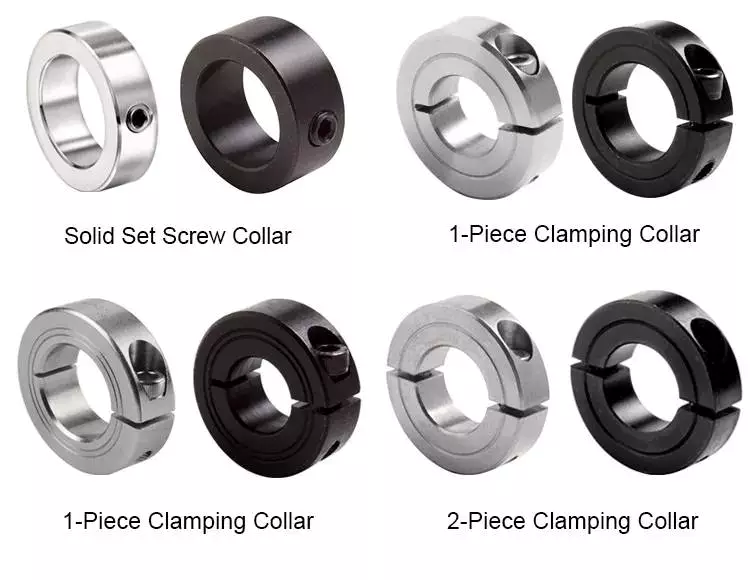
Choosing the right shaft collar for your application
Shaft collars play a key role in many industrial applications, and choosing the correct one is critical. They need to be designed properly and have the appropriate performance characteristics to ensure safe and effective operation. In this article, we will look at the different types of shaft collars and how to choose the right one for your needs. Typically, shaft collars are made from steel or aluminum, coated with zinc or another corrosion resistant material. But they can also be made from non-metallic materials.
Shaft collars come in a variety of shapes and materials, and the right one for your application will depend on these features. The key factors to consider are the material, holding power, and surface treatment, and their alignment with your application specifications. The shaft collars that fit your application best are often highly customizable, so it is important to determine the exact specifications for your application.
Shaft collars are simple and versatile components that are used to secure bearings on a shaft. They also serve as mechanical stops and can help to align and space other components. Shaft collars are widely used in gearbox assemblies, flagpoles, medical instruments, and other applications. They are available in a wide variety of styles, and can be used for nearly any application.
The type of shaft collar you choose will depend on the application and the type of machine. A heavier duty shaft collar will provide better vibration and shock resistance. These collars are typically designed for off-road or mining applications, and can be made of heavy-duty steel. They also provide more holding power, as double-wide shaft collars can provide an additional 25% of holding power.
When choosing a shaft collar, it’s important to consider the application and the required level of maintenance. Some assemblies will only need minor adjustments, while others require frequent disassembly. A two-piece shaft collar is a better option for assemblies that will have to be removed often.

editor by czh2023-02-19
China Made in China CNC Turning Mining Machine Cone Crusher Spare Parts Bronze Steel Eccentric Bushing bearing shaft collar
Product Description
Solution Description
|
Business Profile
HangZhou Xihu (West Lake) Dis. Equipment Manufacture Co., Ltd., found in HangZhou, “China’s historical copper cash”, is a “countrywide substantial-tech enterprise”. At the beginning of its establishment, the business adhering to the “to provide customers with high high quality merchandise, to offer timely service” idea, adhere to the “every little thing for the buyer, make client exceptional provider” for the mission.
Certifications
Q: In which is your organization found ?
A: HangZhou ZheJiang .
Q: How could l get a sample?
A: Prior to we gained the first get, please pay for the sample value and specific payment. we will return the sample cost back
to you in your first order.
Q: Sample time?
A: Present items: within twenty-sixty times.
Q: No matter whether you could make our model on your products?
A: Indeed. We can print your Symbol on both the products and the packages if you can fulfill our MOQ.
Q: How to assure the top quality of your merchandise?
A: 1) stict detection in the course of production. 2) Strict entirely inspecion on items just before cargo and intact solution
packaging ensured.
Q: lf my drawings are safe?
A: Indeed ,we can sign NDA.
|
US $10-150 / Piece | |
5 Pieces (Min. Order) |
###
| After-sales Service: | have |
|---|---|
| Warranty: | 1 year |
| Type: | OEM/ODM/Customized |
| Application: | OEM/ODM/Customized |
| Certification: | ISO9001: 2000 |
| Condition: | New |
###
| Customization: |
Available
|
|---|
###
###
###
###
|